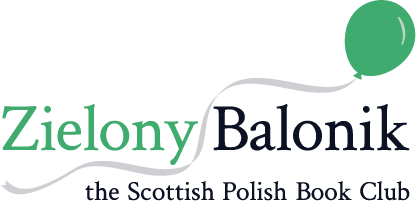Iron Curtain (2013)

At the end of the Second World War, the Soviet Union unexpectedly found itself in control of a huge swathe of territory in Eastern Europe. Stalin and his secret police set out to convert a dozen radically different countries to a completely new political and moral system: communism. Iron Curtain describes how the Communist regimes of Eastern Europe were created and what daily life was like once they were complete. The book describes how political parties, the church, the media, young people’s organizations – the institutions of civil society on every level – were eviscerated, how the secret police services were organized, how ethnic cleansing was carried out – and how some people were forced to collaborate while others managed to resist.
Buy online:
Zielony Balonik book club notes:
Comments on the book and the period it covered
The book was published in 2006, after 6 years’ research.
Her comparative approach – focussing largely on East Germany, Poland and Hungary, is successful.
The devastation of eastern Europe caused by WW2 made this Soviet imperium possible – that and western collusion (specifically Churchill) in defining the Soviet ‘sphere of influence’.
In 1944/45 the USSR was welcomed as the old state had collapsed. Despite its rhetoric, it had been powerless against the Nazi and Soviet invasions in 1939. There were no alternatives to Soviet power after WW2.
20% of the population of Poland died during WW2.
A breakdown in social relations under the Nazis, not repaired thereafter.
Mass movements of peoples – everyone moved east, the Jews moved to Palestine, and the Palestinians became the ones left without a new territory to move into.
The process of Sovietisation replaced local communists with ‘Moscow communists’ – trained in the USSR, often during WW2.
Think of the USSR as a colonial power; Britain and the US used not dissimilar methods in their colonies. It was defending and expanding its geo-political interests.
The Soviets had better (more realistic) information on the social attitudes and activities than did local leaders.
Warsaw was rebuilt, under Soviet influence, in their preferred ‘authentic national style’ – conservative and anti-modernist. The acronym MDM, the whole nation builds our capital city. Formerly German towns were neglected, as there was a fear the Germans would return to reclaim them.
Unlike in Germany, at the end of the war there was no infrastructure left in Poland (what the Germans hadn’t taken the war destroyed).
Film censorship – the scripts were thoroughly combed for anything unorthodox, but not images.
The countries behind the Iron Curtain were largely ignored by the west (not that they had been of any interest to them before the war; e.g. Chamberlain’s 1938 description of German threats to Czechoslovakia as “a quarrel in a far-away country between people of whom we know nothing”).
Those in eastern Europe also felt the Iron Curtain was an appropriate metaphor.
After 1956, the paths of the various Warsaw Pact countries increasingly diverged.
Soviet Russians had little understanding of civic initiatives (Applebaum points out, in her ‘Epilogue’, that this is still the case) and repressed these. The aim was to destroy horizontal relationships.
Applebaum has the advantage of being able to read primary sources in Polish and Russian. Her superb research (though the maps are poor).
Applebaum is writing as an outsider – voyeuristic, intrusive?
She is more sympathetic to the plight of Polish refugees than Germans, especially those agitating for the return of territories then forming part of Poland in the 70s and 80s.
She writes well on the effects of Soviet repression in eastern Europe, but beyond wholehearted condemnation gives few insights into the thinking of the Soviets themselves.
Comments on Poland and other eastern European countries after the communist period
The need, in the early 1990s, to recreate the education and legal systems. There were very few accountants in Poland in the early ‘90s; no lawyers in post-Mao China.
A market system depends on relationships of trust, as well as a functioning central authority. When the USSR collapsed, the power vacuum was filled by the old nomenklatura and a new mafia, creating a system like that in southern Italy.
A history book with lessons for the present; in Poland the media, judiciary and education policies are increasingly controlled by central government; the sacking of the museum director in Gdańsk; also what’s happening in Hungary, Turkey, Hong Kong; authoritarian leaders unwilling to listen to other viewpoints.
There are now many in the former East Germany (GDR) who support extreme-right politics; the GDR was assumed by its leaders to be a proletarian state without any former Nazis, so it never faced the past in the way those in West Germany did.
Post-communist society’s problems – how much has changed? To what extent does the current Polish government ape the tactics of the communist government it despises?
Personal comments
At a legal conference, the Germans, Bulgarians, Czechs and Soviets were the most hardline.
A fear of being informed on? Not really, you tended to know who was the informer among students, in a workplace; people were wary and careful, but actually a degree of openness, even e.g. in Leningrad in 1975 it was possible to speak honestly.
Women knew how to get things done, and did things privately; good horizontal relations were needed in order to survive.
The tv programme Nordic Murders is set in Świnoujście / Swinemünde, Baltic islands on the German-Polish border.
Hungary has become closer to Russia, while Poland remains suspicious of her eastern neighbour, given recent and historical treatment by Russia.
The formerly German city of Elbląg (Elbing) was partially dismantled to rebuild Warsaw and Gdańsk.


